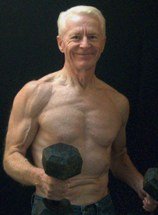


In today's Dec. 15, 2010 newsletter . . .
Blue Zones: What can be learned from them?I have a confession. I have on occasion watched day-time television. Someone told me there is formula that says x number of daytime television hours watched equals x number of IQ points lost. I’m not sure it was meant as a joke, but I wouldn’t be surprised to learn that it is true.I’m convinced that most, but not everything, on daytime TV destroys brain cells. Still, sometimes there are exceptions. Several months ago, I heard that Oprah was having as a guest Dan Buettner, the man who wrote Blue Zones. Buettner’s book reports on his surprising findings from a five-year global study on the keys to personal happiness. Well, who isn’t interested in personal happiness? So I tuned in. What Buettner learned was that there are certain areas in the world where people, on average, live longer, are much happier, and have healthier lives than in most other places. He studied the habits of these people and believes the rest of us, if we choose, can follow "Blue Zone" practices to increase our own longevity and quality of life. We have heard this line of thought before. Remember the Hunza people we read so much about several decades ago. The Hunza land resembled and may have inspired the fictional Shangri-La in James Hilton's novel Lost Horizon. Its people became famous for robust health and a longevity said to often exceed 100 years. Later on, not everyone thought the findings were entirely factual. But that is another story. Dan Buettner seems to have found several "Shangri-La’s" where people live longer and are happier than those in other places. And so far, his conclusions seem to have held up under scientific scrutiny. Five Blue Zones were identified by Buettner. They are:
Why do people living in Blue Zones seem happier and live longer? Truthfully, a lot of the things attributed to their happiness and longevity we’ve heard before. We know, for example, that long term stress overload, especially when it is bottled up, is a killer. Blue Zone people lead relatively low-stress lives. Interaction with family and friends plays a major role in keeping them healthy, too. Spiritual or religious affiliation is also a plus. Typically, they don’t smoke. They are not fat. And, to no one’s surprise, regular physical activity is a part of their daily lives. When it comes to diet, some people will be surprised that people in the five Blue Zones did not all eat the same foods. Some ate meat; at least one Blue Zone was vegetarian; some eat dairy, some did not. However, a few irrefutable conclusions do come through. No one living in any of the Blue Zones makes a diet of processed foods. The majority of food they eat is plant based, that is fruits, vegetables, and legumes. In Blue Zones where people eat meat and dairy, they do not eat a lot of it. Saturated fat in the diet is minimal. Food portions are smaller than what is average in most well off nations today. You do not see fat people. You see fit, active people. And no one is mega-dosing on vitamin pills or supplements. Being too fat is epidemic in most modern nations. It does not have to be that way. It is a choice. Dedicated people can normalize their bodyweight through a number of weight loss programs. The Gray Iron way of eating is one good way. It is practical and falls in line with what was learned in Blue Zones. Go here to get started. You've probably heard about the tremendous benefits of weight training and how you can retain -- or even reclaim -- the attributes of youth . . . Discover the way with . . . Gray Iron: A Fitness Guide for Senior Men and Women Newsletter Policy The Gray Iron Fitness Newsletter is a free publication sent twice monthly to subscribers. The purpose is to provide honest and realistic fitness information for people age 50 and above. Like newspapers, magazines and television, this newsletter and web site contain advertising and marketing links. I have never been paid or received compensation of any kind to write a positive review or endorse a product. If I say that I personally use a product or service, it is because I find value in it and have paid for it with my own money. The newsletter and web site provide information to help users establish and maintain a fitness lifestyle. But fitness information is not the same as fitness advice, which is the application of exercise and dietary practices to an individual's specific circumstances. Therefore, always consult with your physician for assurance that fitness information, and your interpretation of it, is appropriate for you. Your comments and questions are always appreciated. Sincerely, Logan Franklin |